Load Restraint
Which diagram shows the correct position for carrying loads with potentially dangerous projections?
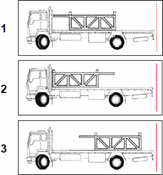
Which diagram shows the correct dunnage position for long rigid loads such as steel pipes?

Vehicles carrying what type of loads are more likely to overturn on corners?
Which of the diagrams shows the correct loading position to prevent twisting of the chassis frame?

Which diagram shows the correct load position to ensure weight on the steer axles?
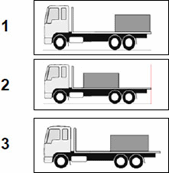
The truck shown in the diagram is braking heavily. In what direction will the unrestrained load on the truck tray move?

Which diagram shows the correct method for restraining small pipe or log loads?

Sheets and tarpaulins are not strong enough to hold down bulk loads unless the load is:

The load on the vehicle shown in the diagram is resting against the headboard. This method of load restraint is known as
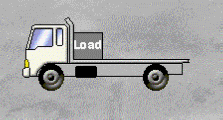
The most important part of blocking when securing a load is:
A load restraint system on a vehicle should be capable of restraining what percentage of the weight of the load from shifting sideways or rearwards?

For vehicles with a GVM over 4.5 tonnes (excluding cranes) the vehicle width, including the load, must not be greater than:
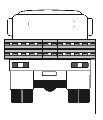
Which diagram shows the correct method for restraining a loose load?
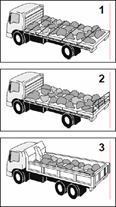
Which 'tie down angle' is not recommended for lashings?

What is the maximum length that a load may project in front of a vehicle?
Which diagram shows the best method for securing loads and protecting lashings?

Loaded shipping containers fitted with corner twist locks should:

In which diagram is the load NOT blocked?
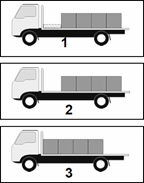
A poorly loaded vehicle is unsafe to drive. To avoid loss of steering and loss of traction under power, you should:
What is the maximum allowable distance that a load may project on the side of a vehicle, provided overall width does not exceed 2.5 metres?
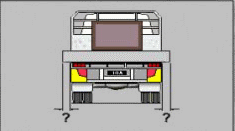
Which diagram shows the correct method for restraining large pipe loads?
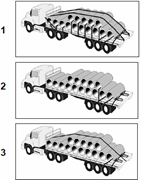
When loading cardboard cartons and boxes on a vehicle, where should the heaviest items be placed?
Which diagram shows the correct method for restraining divided loads?
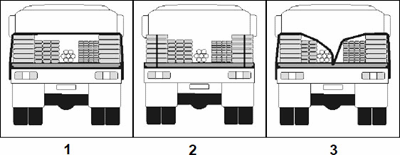
A load restraint system on a vehicle should be capable of restraining what percentage of the weight of the load from shifting forwards and upwards?

Which of the following methods will best directly restrain a contained load?

The vehicles shown in the diagram are loaded with logs. Which ones have correctly secured loads?
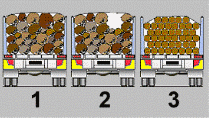
Not enough to pass :-(
You have answered 0 correct out of 26 question(s).
What's Next?
Review your answers
See which answers you chose and what the correct answers are.
Study Guide
Review all the correct answers.
Question: {counter}
{question}
- {options}
